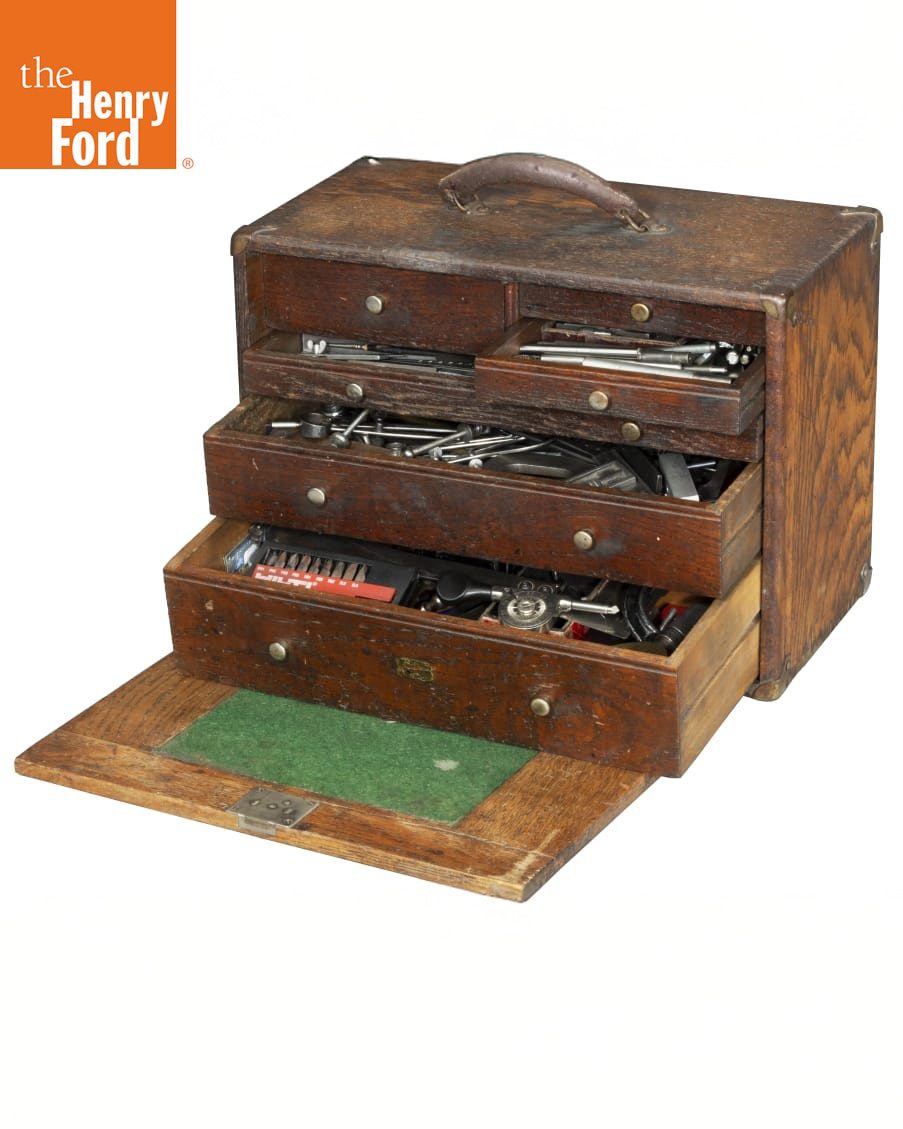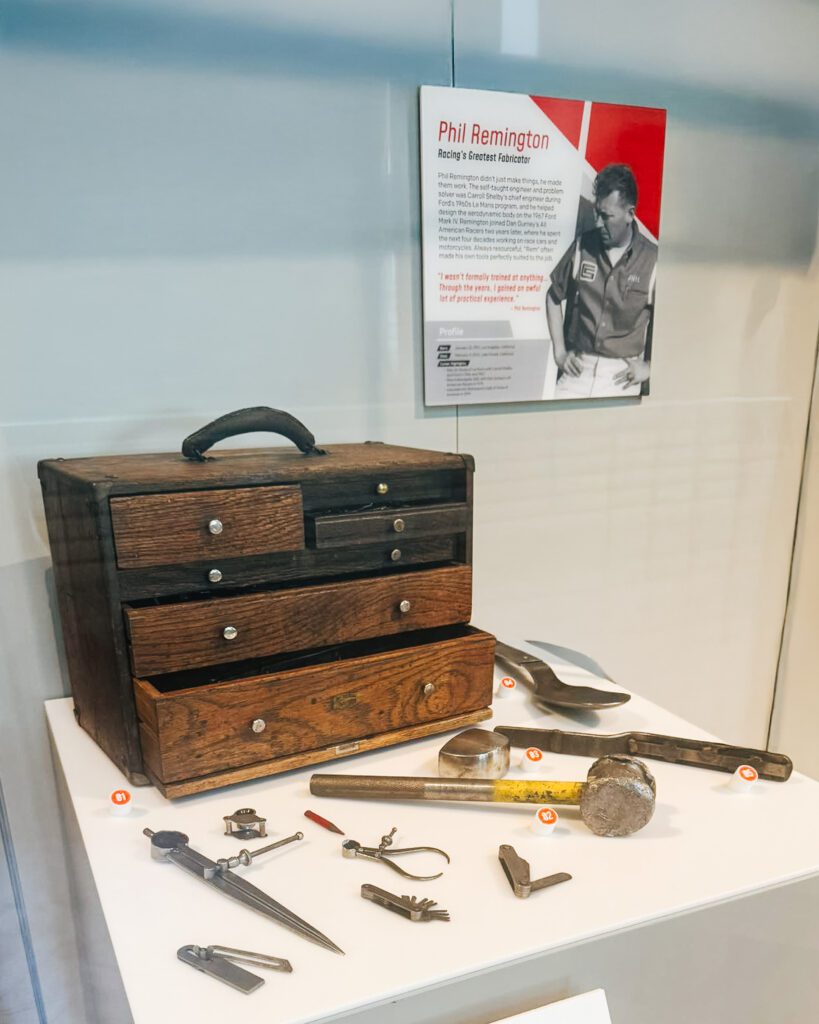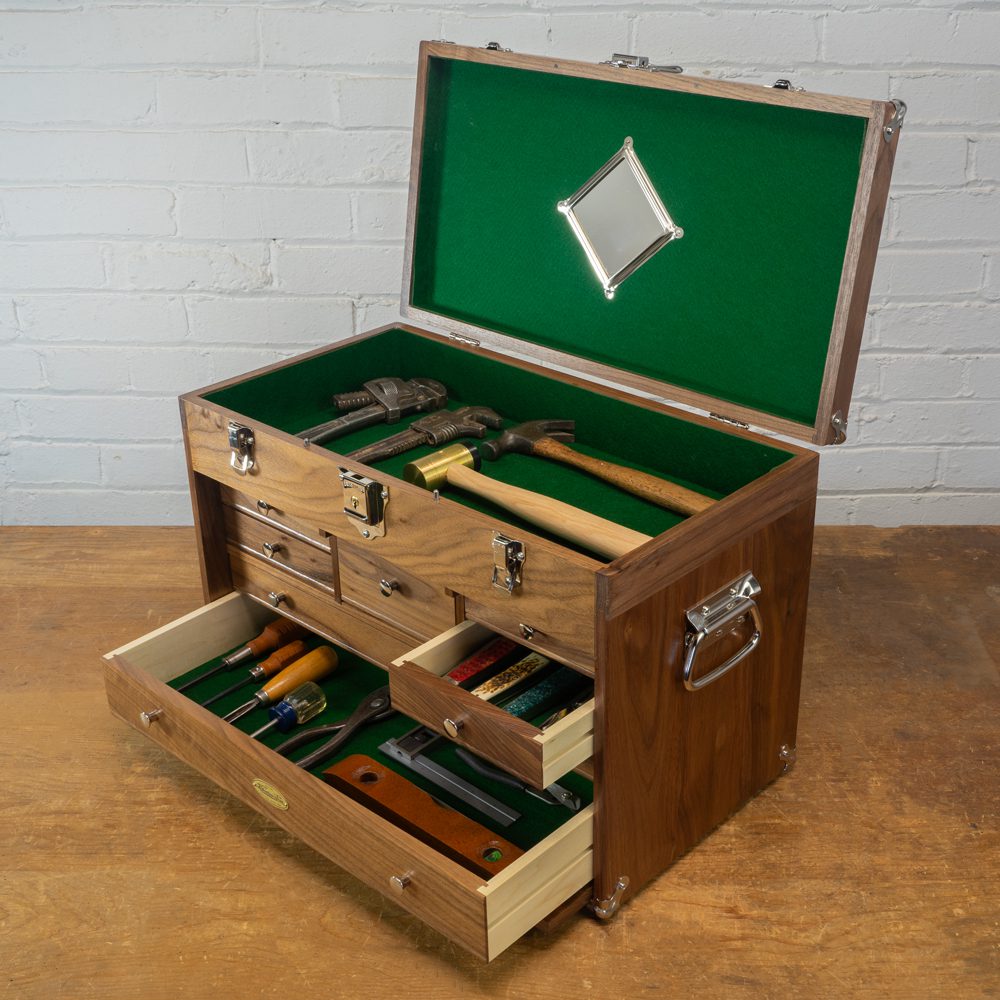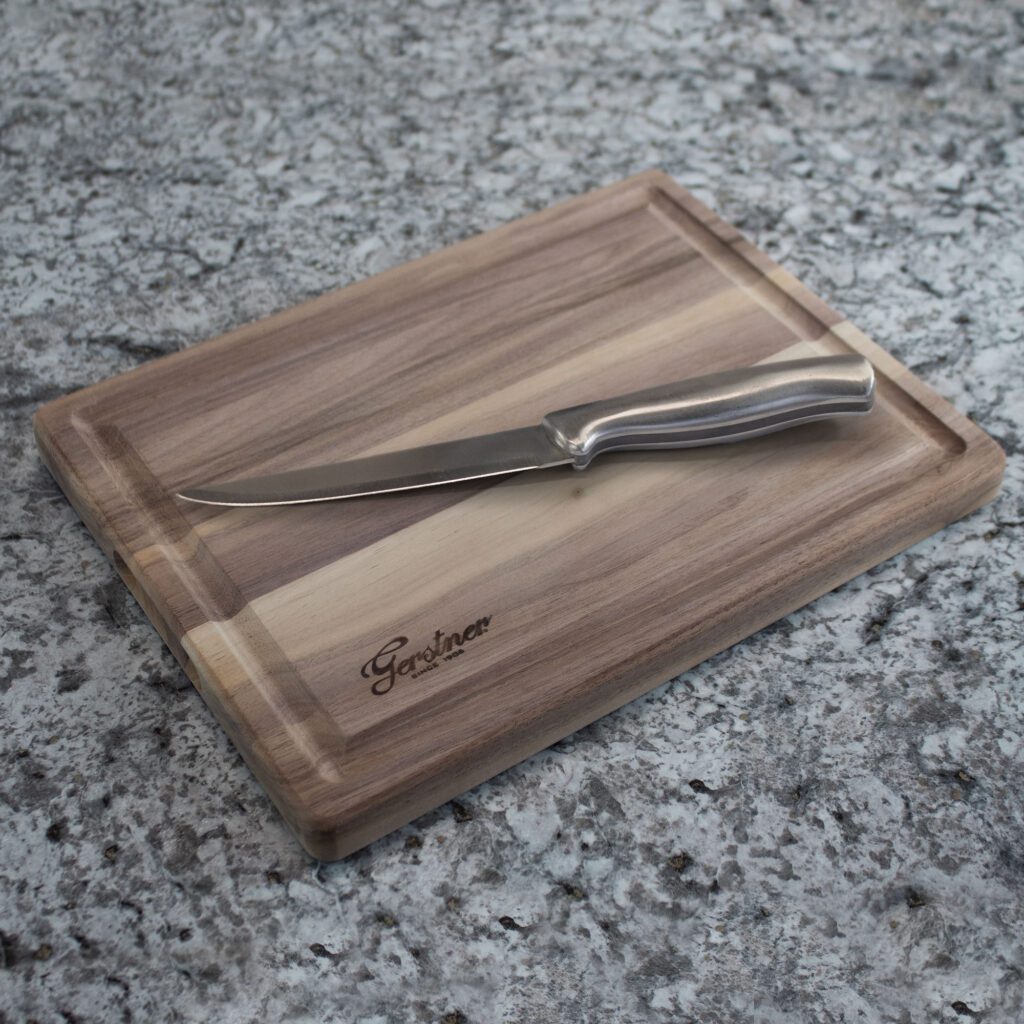
In Dearborn, Michigan, an old oak tool chest sits behind glass at The Henry Ford Museum. Its corners are dented, the leather handle cracked from decades of use. This unassuming wooden box once belonged to Phil “Rem” Remington, one of racing’s greatest fabricators who worked with Carroll Shelby and Dan Gurney. Remington received the chest as a high schooler in the late 1930s and “used it for the rest of his life,” crafting and stowing custom wrenches and parts through countless races
Today, visitors admire the chest as a tangible piece of automotive history. But few realize that this toolbox, labeled “National Cabinet Company,” holds an even deeper connection to American craftsmanship. It is a product of H. Gerstner & Sons, the legendary Dayton, Ohio firm known for the finest wooden tool chests in the world. The story of how a Gerstner chest came to wear a “National” badge is a fascinating tale of entrepreneurial savvy, industry competition, and the enduring legacy of American handcraft.
An Alternate Identity Born in the Roaring Twenties
The National Cabinet Company began as an alter ego for H. Gerstner & Sons in the early 1920s. Harry Gerstner, the founder of the Dayton-based tool chest company, built his reputation on top-quality craftsmanship. By 1921, his business was expanding, and he registered “National Cabinet Company” as a trademark for a new venture
Rather than a separate factory, National Cabinet Co. was essentially a “doing business as” name under which Gerstner could explore new products and markets while preserving the prestige of the Gerstner brand. In fact, National Cabinet Company operated out of the same Dayton workshop as the main Gerstner line.
What prompted Gerstner to create this second identity? Part of the answer lies in America’s roaring 1920s tech boom, the radio. At the time, radios were the hot new home technology, often housed in elegant wooden cabinets. Gerstner saw an opportunity. Under the National Cabinet Co. name, his firm began producing polished radio cabinets and other household wooden cases, tapping into a lucrative market beyond machinists’ tool chests. For a few years, National Cabinet Co. was known primarily for radio and phonograph cabinets, riding the wave of consumer demand in the Jazz Age (all while Gerstner’s core business quietly continued making tool chests). This foray showed Harry Gerstner’s knack for diversification. Yet another development, the rise of competitors in the tool chest arena, would truly define the National brand’s legacy.
Launching the “National” Line of Tool Chests
By the mid-1920s, Gerstner faced increasing competition in wooden tool chests. His own chests were premium products, priced at about a skilled worker’s weekly wages since the company’s 1906 founding. Cheaper alternatives made by rival companies were cropping up, threatening to undercut Gerstner among budget-conscious customers. Harry Gerstner’s response was bold: create a new line of economy-grade tool chests under the National name. Around 1926, the National Cabinet Company brand expanded from radio furniture into lower-cost machinists’ tool chests and cases to directly compete in the broader market.
On the surface, a National chest looked much like a regular Gerstner chest, sturdy hardwood frame, multiple felt-lined drawers, a stout handle, and a front panel that could cover the drawers. But inside and out, National chests were engineered for value. H. Gerstner & Sons deliberately used more economical materials and finishes for the National line. For example, where a flagship Gerstner might use expensive quartersawn white oak (with its distinctive tight grain and superior stability), a National chest would use plain-sawn oak, a more affordable cut of wood. The plainer wood saved cost while still providing durability. Similarly, National chests might feature simpler hardware or fewer ornamentations than their Gerstner-branded cousins.
The guiding principle was to deliver Gerstner’s renowned functionality and basic quality at a lower price point. If a master craftsman’s Gerstner chest was the Cadillac of tool storage, the National chest was the reliable Chevy, not as fancy, but it got the job done for a wider audience. The strategy worked. Buyers soon came to know these economy chests simply as “National” tool chests.
The National Cabinet Company label (often a gold-and-black decal or nameplate affixed to a drawer or front panel) became a mark of a solid, workmanlike chest at a sensible price. During the late 1920s and into the 1930s, lean years of the Great Depression, Gerstner’s National line likely proved a lifeline for young tradesmen, apprentices, and tinkerers who aspired to own a quality chest without breaking the bank. Carpenters, tool-and-die makers, hobbyists, even dentistry students found National chests suited to their needs (indeed, Gerstner offered a National-branded “student dental instrument case” as one of the models). By offering multiple product tiers, Harry Gerstner ensured that his company could serve both the top end of the market and the everyday craftsman.
Journeymen and Legends Alike Trusted “National” Chests
Though they were marketed as an affordable alternative, National chests earned a reputation for toughness and utility in their own right. They were built in the same Dayton factory and overseen by the same family firm, after all. Over nearly three decades, thousands of National-branded chests left the Gerstner workshop and found homes on workbenches across America. Many a journeyman machinist got his start with a trusty National chest stocked with micrometers and calipers, its no-nonsense oak frame aging gracefully under layers of machine oil and metal shavings. One of those chests eventually made its way to a teenager in Santa Ana, California, young Phil Remington. As Remington’s legend grew in the automotive world (from building warplanes in WWII to engineering Le Mans-winning Ford GT40s in the 1960s), his National Cabinet Company chest remained a constant companion. He customized it with homemade tools and carried it from shop to racetrack, year after year.

The fact that Remington never “upgraded” to a fancier chest speaks volumes. His National box survived rough transport, frantic all-night thrashes in the pit lane, and the humid California air, all while protecting precision instruments inside. When he opened it up, the felt-lined drawers might have held anything from a delicate caliper to a hand-filed prototype part. That chest was more than storage, it was part of Rem’s identity as a craftsman. Little wonder that when Remington passed away in 2013 at age 92, his old National chest was treated like a piece of racing history. The Henry Ford Museum acquired it (through the Dan Gurney family) and made it a centerpiece of their “Driven to Win: Racing in America” exhibit.
There it sits today, scars and all, a humble National chest elevated to museum artifact. Remington’s story is unique, but it underscores a broader truth: Gerstner’s National chests quietly infiltrated every corner of American industry and hobbyism. They held the tools that built mid-century America, the gauges of an airplane mechanic, the dies of a jewelry maker, the tools of a student dentist, or the screwdrivers of a radio repairman. For many owners, a National chest was a first step into the Gerstner tradition. If you eventually “made it” in your trade, you might later invest in a top-of-the-line Gerstner chest, but if not, your sturdy National could serve you faithfully for a lifetime.
The End of the National Era
By the early 1950s, the writing was on the wall for the National Cabinet Company line. The postwar years brought major changes in the tool storage market. Metal toolboxes and chests (from companies like Kennedy and others) were becoming popular, offering rugged portability at lower cost. More importantly, H. Gerstner & Sons had outlasted virtually all of its wooden-chest competitors by this time. The company’s own name had become synonymous with quality, and there was less need to maintain a separate budget brand. Around 1953–1954, Gerstner quietly ceased production of National-branded chests (the exact final date isn’t certain, but surviving records and labels suggest mid-1950s). The National Cabinet Company had served its purpose and was retired, folding back into the main Gerstner line. It was an unheralded ending, no announcements or fanfare marked the discontinuation. The National label simply faded away as existing stock was sold off.
Gerstner would continue building chests, but henceforth under its own proud name alone. For loyal customers, the disappearance of “National” may not even have been obvious at first. A machinist ordering a chest in 1955 would just receive a Gerstner model, likely unaware that a decade earlier, he might have gotten a “National” instead. In retrospect, however, the span of the 1920s–1950s National chests stands as a distinct chapter in the company’s history, a period when Gerstner & Sons deftly straddled two tiers of the market and kept its business thriving through economic ups and downs.
A Legacy Handcrafted in Dayton, Yesterday and Today
Although the National Cabinet Company exists now only in memory (and on the occasional vintage nameplate), its spirit lives on in Dayton. H. Gerstner & Sons is still very much in business, family-owned and crafting wooden chests with the same care as a century ago.
The fact that Gerstner survived while all its early 20th-century rivals fell away speaks to the company’s ability to adapt without sacrificing quality. The National brand was one clever adaptation. And even after National was gone, Gerstner found new ways to serve a broad clientele – for instance, offering imported lower-cost chests (under the “Gerstner International” label) in recent years, while reserving its Dayton-made line for heirloom-quality products. The ethos remains unchanged: build the best chest possible for the market you serve. Walking into Gerstner’s Dayton workshop today, one can almost sense the ghosts of those National Cabinet Co. chests in the air. Craftsmen still cut and assemble fine hardwoods – oak, walnut, cherry – to create chests that echo the classic designs of Harry Gerstner’s era.
Each drawer is carefully fit and felt-lined; each chest still includes the signature mirror in the lid (a tradition dating to the early 1900s so machinists could clean up before heading home). The company even caters to restorers and collectors of its vintage products. Suppose you happen to own an old National Cabinet Company chest that’s missing its label. In that case, Gerstner will sell you an authentic reproduction decal, but only if you prove you truly own a National, a policy to preserve the brand’s integrity. It’s a small but telling gesture: Gerstner remains a custodian of its legacy, protecting the name and mystique of the National line decades after its demise.
In a fitting twist of continuity, Gerstner’s modern catalog still offers a “Classic Chest” model that is remarkably close to those made in the mid-20th century. In essence, you can buy a new chest today that carries forward the DNA of both the Gerstner and National traditions, a wooden chest that might look at home in a 1940s machine shop, yet is brand-new and ready to serve the next generation.
The National Cabinet Company may have been a subsidiary brand, but its impact endures in each new Gerstner chest leaving the shop floor. From 1921 to around 1954, the National Cabinet Company gave Gerstner a second face that welcomed young tinkerers and thrifty craftsmen into the fold of quality tool chests. It bridged the gap between the best money could buy and what anyone could afford. It put impeccable Dayton-built chests into the hands of men like Phil Remington, whose grease-stained National box quietly helped win races and make history. And though the National nameplate has long since been retired, every Gerstner chest made today carries its legacy: the idea that well-made tools and their storage chests should be available to all who take pride in their craft. The names change and times move on, but in Dayton the wood shavings still fall and the tradition lives on, a living link to the era of the National Cabinet Company and the golden age of American woodworking excellence.



